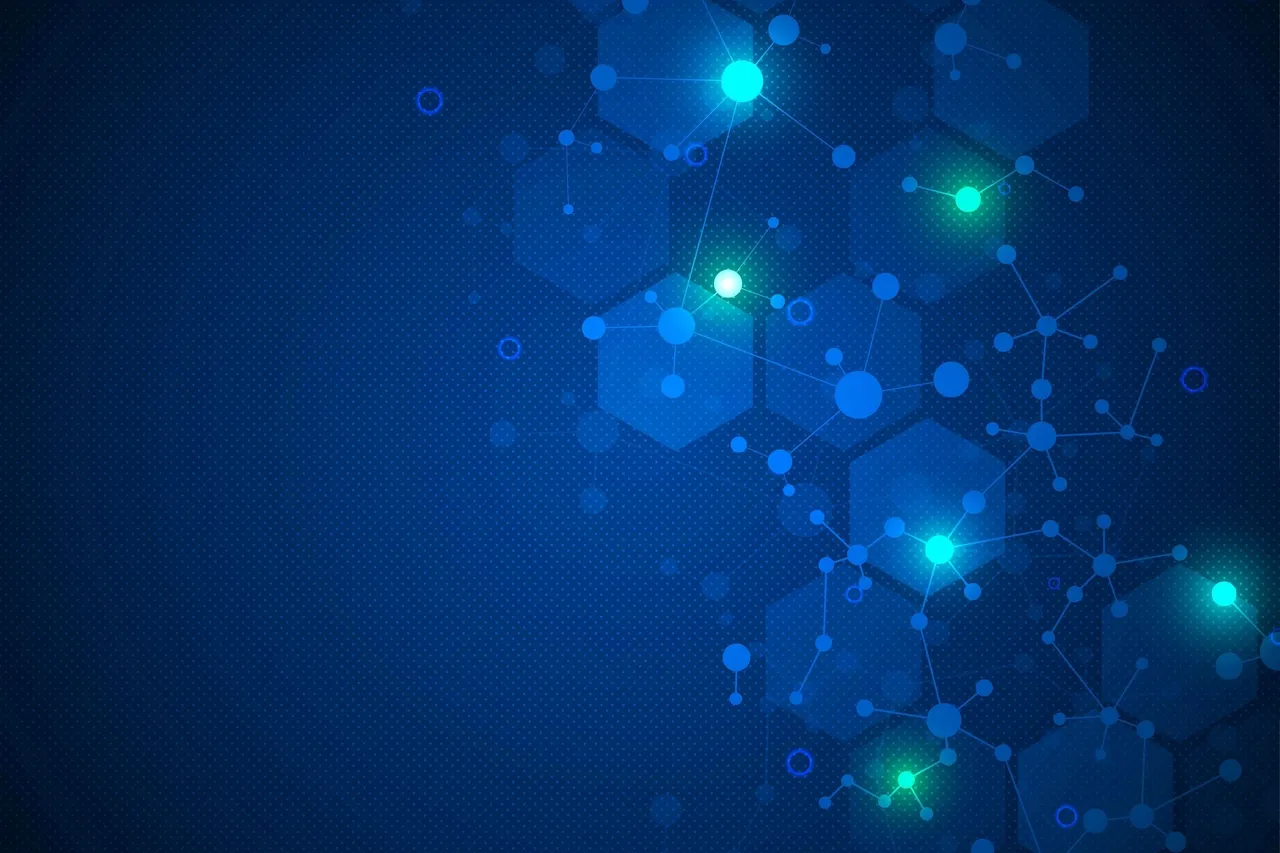Computer Vision Applications from a Cross-industry Perspective
Public and commercial interest in computer vision is growing almost as fast as the technology is advancing. Given the potential diversity of applications, there may eventually be no industry left unenhanced by this particular digital development. Indeed, as an industry in itself, computer vision is a domain in frenetic growth, as can be seen from the chart below.

Computer vision total revenue by segment
Versatility may be a key to the popularity of computer vision applications. This article highlights how they can be used to improve business performance across industries. Then, to provide some examples, we dive a little deeper into the adoption of image analysis, character recognition, and other computer vision capabilities in a number of specific industrial and commercial sectors.
Can Every Industry Benefit from Computer Vision?
Computer vision is itself a broad technological term, encompassing numerous subsets that each can be applied to challenges across a range of industries. Therefore, before looking at some examples of its applications in specific industries, let’s explore briefly what computer vision can do, and how it can be turned to certain groups of tasks common to most, if not all, industry verticals.
Image Recognition & Analysis
With the capability to recognize the content in an image, computer vision applications remove the need for humans to perform certain optical tasks, such as recognizing a person’s face. In fact, image recognition software is more effective at this type of task than a human is, because software has an infinite recall of any images that it can check against a database. It can also do an incredibly good job of recognizing partially obscured faces.

Image recognition
Researchers at Cambridge University developed powerful facial recognition software that returned a 69% accuracy in recognizing the faces of people wearing a combination of a hat and a scarf. When glasses were added, the results deteriorated somewhat, but the software still achieved more than a 50% accuracy.
These results are impressive, especially when you consider that image recognition and analysis is still on the journey toward its full potential. Facial recognition will make computer vision ideal for any industry with a use for personal identity verification, whether for the reasons of security, health and safety, customer service, or marketing.
Other Cross-Industry Uses of Computer Vision Applications
Image analysis software has an infinite range of applications, by no means limited to what can be achieved with facial recognition. Because machine learning models, such as convolutional neural networks, enable software to analyze any still or moving image, computers are becoming capable of managing a plethora of visual tasks, including, but not limited to:
- Object categorization
- Measurement (height, width, depth, mass)
- Sorting and grading
- Visual inspection
- Guidance and navigation
- Mechanical diagnostics
These are the abilities which, again, can be put to work in any industry to automate activities in manufacturing and production, customer service, quality control, marketing, transportation, and doubtless many other processes that previously required the human gift of eyesight.
Let Iflexion's team bring computer vision to your project
Character Recognition
As if the capabilities discussed so far are not enough, another type of computer vision application is able to recognize and decode characters. Essentially, computers are acquiring the ability to read.
Furthermore, they are not only able to read handwritten and typed text, but can decode any types of symbols designed for visual recognition, such as barcodes. This will undoubtedly prove invaluable wherever there is a need to read, such as in document classification and processing, administration, logistics, manufacturing, and security.
Robotics
While they are already prolific in manufacturing, and increasingly so in warehousing, there will come a time when robots have a role to play in every industry. Computer vision brings sight to machines, enabling them to view and analyze their surroundings in a similar way to humans, freeing them from the limitations of pre-programmed repetitive sequences and guidance by laser and inductive sensors.
With computer vision software onboard, robots gain spatial awareness and the ability to interact expansively with anything they see, whether that is a stationary or moving object, the environment around them, another robot, or a human. In fact, computer vision may be the missing puzzle piece that sets robots on the path to mainstream use in both domestic and industrial settings.
Industry-Specific Examples of Computer Vision Applications
Now that we outlined a high-level view of computer vision applications and their cross-industry value, let’s move on to look in a little more detail at their uses in three specific verticals—the food, logistics, and retail industries.
Computer Vision from Farm to Table
Apart from the sense of taste, the food industry also relies on visual perception. So it should be no surprise that computer vision applications are enjoying adoption from one end of the food supply chain to the other.
Indeed, the use of computer vision in the food industry has become instrumental in reducing labor and quality issues, while also increasing productivity. One fruit supplier, for instance, claims that production is up 30% since it started to apply computer vision to quality inspection processes.
Computer Vision Applications in Agriculture
Image analysis technology is increasingly being used in the production and processing of raw materials. At least one system is under development for use in dairy farming, using 3D computer vision to monitor cattle, identifying visual traits in cows that indicate health issues such as lameness, which impact milk yield.
The developers believe that such a system will alert farmers to these issues much earlier than traditional human visual inspections, enabling treatment to be administered before animals start to suffer unduly and their milk yield reduces.
In arable agriculture and horticulture, computer vision applications are becoming commonplace for visual inspection of harvests, particularly fruits, vegetables, and nuts, with software being used to grade products by color, size, and condition. This saves significantly on the cost of such operations as they become less labor-intensive.
Processing & Packaging of Food
Once agricultural production arrives at processing plants, highly customized software applications are being used for further grading—and especially for quality inspection. These quality control applications use image enhancement, segmentation, feature extraction, and image classification, employing neural networks to check products during processing for contamination, freshness, shape, size, and uniformity.
On the packaging lines, computer vision can control fill levels and inspect labeling. Even during storage, the same technology is paired with temperature and time-sensitive color-changing ink to monitor the freshness of packaged food products.
Food Service Industry Applications
The beauty of computer vision applications is that they can be integrated with other technologies, as described in the previous paragraph, to perform increasingly complex tasks. For example, fast food restaurant chains are beginning to experiment with computer-vision-equipped robots for tasks such as burger flipping.
Such activities, while monotonous and mundane for human operatives, require the ability to combine visual acuity to detect when food is perfectly cooked, with a hand-eye (or rather, robotic arm-eye) coordination to manipulate food products, all in an environment that is uncomfortable and potentially hazardous to humans, but harmless to heat-resistant robots.
The first such robot, aptly named “Flippy,” is cooking up to 300 burgers an hour, to a consistent standard, for a Californian fast-food chain. The cost of the robot was $60,000, but Flippy is expected to deliver 100% ROI within 18 months and has been the source of inspiration for other restaurant chains, which are now seriously considering the possibilities for robots to work alongside kitchen staff in their outlets.
Retailers See Less Labor, More Security with Computer Vision
Moving on to retail, you might not need many attempts to guess which tech-oriented retail company is investing money and faith in computer vision to improve customer experience and bolster security.To save you from racking your brain too much, the answer is Amazon.
Amazon’s Go store has had plenty of publicity centered on its convenience factor, but the concept and the technology it employs is also a prime example of how computer vision could revolutionize retail. In place of the traditionally ubiquitous checkout, the Go store is bristling with cameras feeding video to computer vision software.

Amazon Go Store
The software monitors each shopper and by way of complex algorithms, knows when he or she takes an item from a shelf, and what that item is. It can also tell when a customer replaces an item on the shelf (after deciding not to purchase it) and so keeps a completely accurate running inventory of the customer’s shopping basket.
It is this advanced analysis of moving images that enables Go shoppers to ‘just walk out’ (which, appropriately enough, is the name of the software used by Amazon Go) with their purchases, and pay for them online via their Amazon accounts.
Smart Mirrors: Customer Experience & More
Moving on to fashion retail, smart mirrors are getting smarter, as innovators progress from the use of augmented reality alone, adding in cameras and computer vision to enable face and eye tracking. These enhancements ensure that when shoppers try on outfits virtually, the scene in the mirror is rendered accurately from every angle and viewpoint, adding to the authenticity of the experience.
That’s pretty nifty for the shopper, but it may also help retailers to reduce labor in their stores. Have you ever noticed the big piles or racks of clothes outside your local fashion store’s fitting room? Those clothes all have to be put back into the store’s display racks by somebody, but when shoppers can try outfits on virtually and realistically (either in-store or at home), there may be no more garment mountains, and perhaps far fewer fitting rooms.
Smart mirrors might also improve security by limiting the ability of shoplifters to secrete items away on the pretext of trying them on in the fitting rooms.
Of course, computer-vision smart mirrors won’t eliminate the need to let shoppers try on the real thing completely, but they can at least render it unnecessary to try on dozens of outfits while in-store, since shoppers can narrow their options down with a smart mirror, before trying on the ensembles that seem most appealing.
A Look at Logistics with Computer Vision
The logistics industry is another domain that stands to benefit greatly from computer vision. The most obvious and highly publicized application is in the development of autonomous trucks, which need cameras and advanced image analysis capabilities to navigate and position themselves safely on the road.
However, there are many other uses of computer vision in logistics, most of which have not attracted the same attention as the daunting possibility of 40-feet autonomous goods vehicles on our highways. Almost as ominous to consider, but already in widespread (and safe) use in many fulfillment and distribution centers, are autonomous mobile robots (AMRs) equipped with computer vision, machine learning capabilities, and logistics software.
Free-Roaming Warehouse Robots
AMRs are used to pick inventory items from warehouse storage locations and transport them to palletization areas or loading bays, and are a big step forward from their forerunners—autonomous guided vehicles (AGVs), The latter require considerable customization of warehouse infrastructure, often in the guise of inductive strips to guide them around their working spaces.
Autonomous mobile robots can navigate freely, using computer vision to find their way around and machine learning to map their environment. Instead of needing to stop when an obstruction (such as a human operative) is detected in its path, an AMR can redirect itself to pass the obstruction safely, either in close proximity or by moving to an alternative aisle.
These navigation capabilities make warehouses safer and more productive. They also increase operational flexibility, as there are no inductive tracks and laser targets to be taken up and repositioned should the need arise to change routes around the warehouse.
Some companies, like online grocery retailer Ocado, not content to limit the use of robotics to order picking alone, are experimenting with machine-vision equipped robots for other applications, like maintenance tasks in automated warehouses. The humanoid ARMAR-6 robot in the image below is currently being tested for such a maintenance role and is equipped with 3D visual scene perception.

Secondhands robot prototype ARMAR-6
Facial Recognition for Safety & Security
Safety is paramount in the logistics environment, as heavy machinery and equipment must share working space with soft and vulnerable human beings. Security is vital too since warehouse break-ins and truck hijackings can subject operators to huge financial losses. Computer vision is already beginning to mitigate safety and security issues, and will surely do so more effectively as time goes on.
For example, as long as goods vehicles require drivers, which may be for some time yet, systems using facial recognition to validate authorized operators can be linked to truck immobilizers, making it much harder for thieves to get away with the goods, or for untrained operators to place themselves and others at risk.
From the safety perspective, the same is true of other heavy equipment used in logistics, like forklift trucks, which have a history of accidents caused by unauthorized operation. With immobilization systems onboard using facial recognition, the operation of industrial equipment could be restricted to properly authorized and registered users.
Better Barcode Scanning
Logistics is a domain in which barcodes proliferate, and given their low cost compared with more advanced identification technologies such as RFID, they are not likely to go away anytime soon. However, conventional barcode scanners are inefficient, not least because only one barcode can be read at a time, and they can easily generate incorrect data when reading barcodes that are damaged or positioned incorrectly.
Computer vision is now replacing LED and laser readers, to ensure barcodes remain a familiar feature of logistics processes, but more importantly, to enable them to be scanned faster, more accurately and without specialized hardware. A smartphone camera will do because an advanced optical recognition app does the clever bit. Yet, for multiple barcode scanning on pallets or conveyor systems, specialized cameras with a wide field of view will still be necessary.
Execute enterprise projects of any complexity, from OCR to advanced robotic vision













